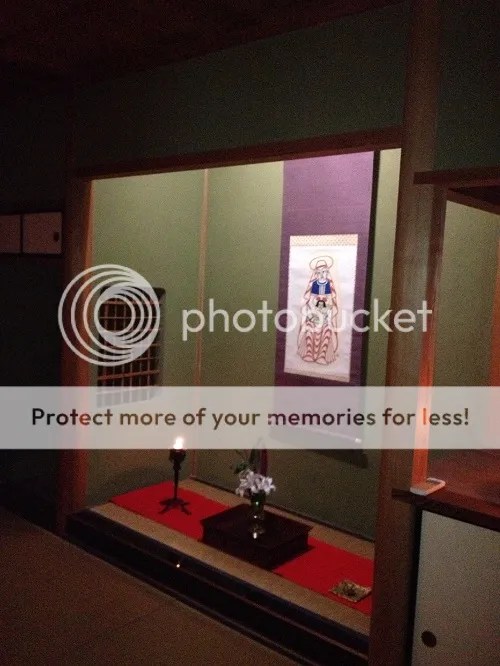New Years is Japan’s most important holiday of the year–and like many important holidays, it usually is celebrated over the course of several days. While there are plenty of traditions associated with this season (decorating with and eating rice cakes, playing special games and reciting seasonal poetry, etc), today I’d like to introduce Hatsumode, the first shrine and temple visits of the New Year. Yes, this is a repeat from the past three years, but the info remains timely.

This is a list of major shrines and temples for Hatsumode in the San’in region that are especially well known for the following special intentions. While certain strains of Buddhism may resemble other world religions more so in the personal salvation aspect, the Kami of Shintoism are generally happy to grant more worldly requests. Not that they always do so out of any innate goodness–many of them are unwilling to help unless you pay up, and when you do ask for something, you have to tell a lot of them your name and address or they won’t be able to find you later and grant your request. Kami may be powerful, holy beings, but they do have their limits! Whatever you do, be sure to show gratefulness first.
The following special intentions are just suggestions. While a matchmaking kami wouldn’t necessarily turn down a request for financial prosperity, your odds might be better if you chose your Hatsumode shrine carefully.
1. 出雲大社 Izumo Taisha
Izumo, Shimane
Special intentions: matchmaking, fertility, other general intentions
Dec 2013 update: Some basic Izumo Taisha info, though it’s mentioned everywhere on this blog
Dec 2015 update: It’s still mentioned everywhere, but here’s a couple more entries about the shrine layout and En-musubi.
2. 須佐神社 Susa Jinja
Izumo, Shimane
Special intentions: safety for one’s family, prosperous business, traffic safety, other general intentions
Dec 2013 update: This is a shrine dedicated to Susano-o, who defeated the Yamata-no-Orochi
3. 長浜神社 Nagahama Jinja
Izumo, Shimane
Special intentions: Good luck in meeting challenges
Dec 2014 update: This is the shrine of Kunibiki legend!
4. 日御碕神社 Hinomisaki Jinja
Izumo, Shimane
Special intentions: Protection from evil, matchmaking, matrimonial harmony, prosperity for one’s family, safety on the seas, etc.
5. 一畑薬師 Ichibata Yakushi
Izumo, Shimane
Special intentions: Healing of eye diseases, safety for one’s family, safe childbirth, prosperous business, and any other general intentions
Dec 2013 update: See my entry here from when I served in a tea ceremony
6. 宇美神社・平田天満宮 Umi Jinja / Hirata Tenmangu
Izumo, Shimane
Special intentions: General good luck, fruitful studies, avoiding misdeeds
7. 熊野大社 Kumano Taisha
Matsue, Shimane
Special intentions: Matchmaking, protection from evil
Dec 2013 update: Also a Susano-o shrine
Dec 2014 update: And one of the best places for Setsubun on Feb 3!
8. 平濱八幡宮 武内神社 Hirahama Hachimangu Takeuchi Jinja
Matsue, Shimane
Special intentions: Longevity, avoiding bad luck, prosperous business, safety for one’s family, traffic safety, etc.
Dec 2015 update: I will have a post about this one near the beginning of January!
9. 菅原天満宮 Sugawara Tenmangu
Matsue, Shimane
Special intentions: Passing exams, fruitful studies, avoiding bad luck
10. 八重垣神社 Yaegaki Jinja
Matsue, Shimane
Special intentions: Matchmaking, matrimonial harmony, fertility, safe childbirth, avoiding misfortunes and disasters
Dec 2013 update: A shrine known for its mirror pond that reveals how soon and how close you’ll meet your soul mate
11. 神魂神社 Kamosu Jinja
Matsue, Shimane
Special intentions: Getting rich, prosperous business
Dec 2013 update: This is where I went for Hatsumode 2013!
12. 佐太神社 Sada Jinja
Matsue, Shimane
Special intentions: Guidance, good luck, traffic safety, safety on the seas
Dec 2013 update: Home to Sada Shin Noh, a UNESCO World Heritage sacred dance
Dec 2014 update: As well as a cool example of Taisha-tsukuri architecture, see here and here.
Dec 2015 update: See also the legend behind the birth of the primary deity enshrined there, as well as more about Sada Shin Noh.
13. 美保神社 Miho Jinja
Matsue, Shimane
Special intentions: Safety on the seas, satisfactory fishing, prosperous business, flourishing crops, safe childbirth
Dec 2015 update: Home to Ebisu, one of the mirthful lucky gods, as well as home to a couple of major rituals tied to Kojiki mythology
14. 清水寺 Kiyomizu-dera
Yasugi, Shimane
Special intentions: Safety for one’s family, prosperous business, passing exams, good health, traffic safety, making dreams come true, life-long good luck, safe childbirth, etc
Dec 2013 update: See my entry about it here
15. 勝田神社 Kanda Jinja
Yonago, Tottori
Special intentions: Prosperous business, safety for one’s family, and other general intentions
16. 宗形神社 Munakata Jinja
Yonago, Tottori
Special intentions: Life-long good luck on the battlefield, safety on the seas
17. 名和神社 Nawa Jinja
Saihaku, Tottori
Special intentions: Life-long good luck on the battlefield
18. 金持神社 Kamochi Jinja
Hino, Tottori
Special intentions: General good luck, but especially good financial luck






























































































